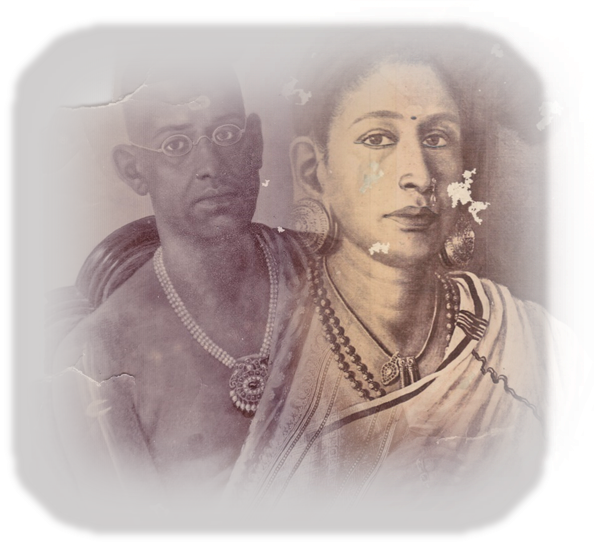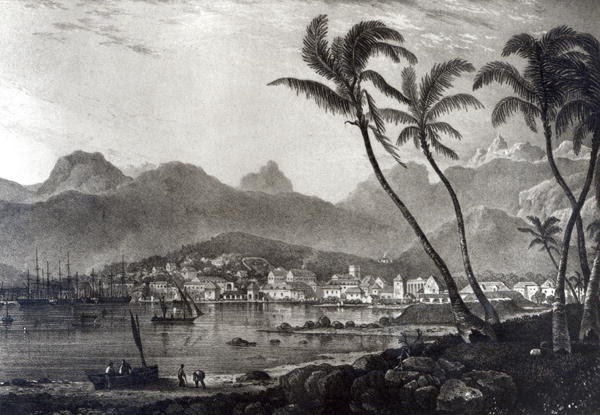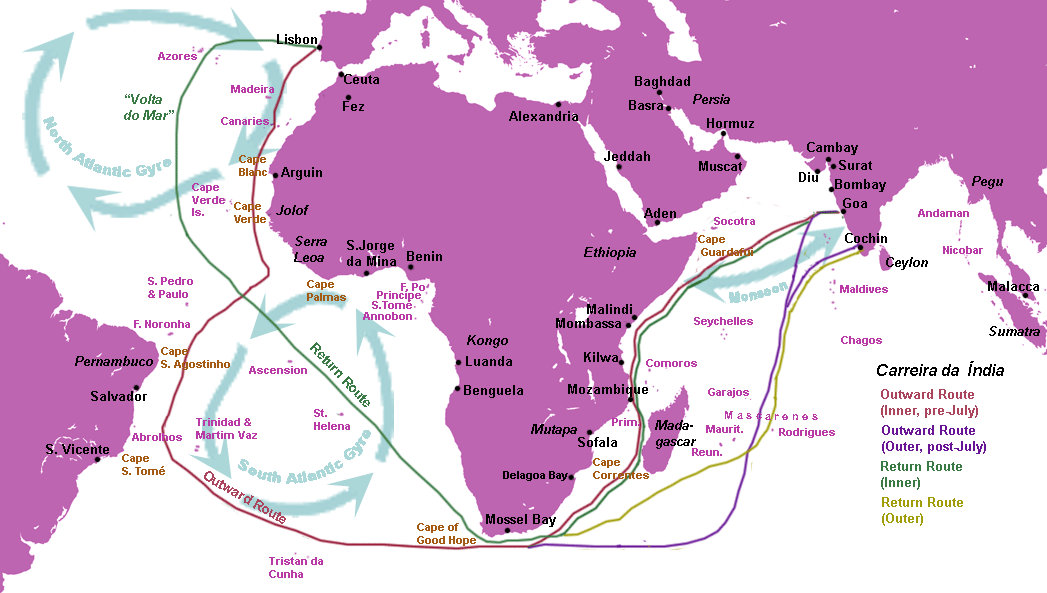No Indian can ever forget the taste of Amul butter on fresh bakery bread. I won’t either. Each time we visit our neighborhood grocer, I try to find ways to convince my wife that we should buy a packet Amul (Can’t say I have succeeded, perhaps after reading this she will change her mind!). How would it be, if I spent a few hours on the person behind it all, a Malayalai born at Calicut in 1921 but knew that his life was to be made elsewhere, moving past Gobichettippalayam, Mannargudi, Madras, Jamshedpur, Bangalore, Michigan(USA), to finally end up at Anand, a sleepy little town in Gujarat (where he was to remain till the end of his life)? The story would span a few days of telling, but I will try to be concise, and make it a half hour's read.
I think I have mentioned this previously. Each of my articles is the mostly the result of a personal journey to learn the story which I then retell to you all. This one that follows the same route and as I picked up each fact from books and articles, I marveled at the person behind it, none other than Verghese Kurien, a simple man with big ideas, who wanted to make a name for himself. He was like many of us, a person who wanted to become a military man, a boxer, a metallurgist, an atomic scientist, a tennis player, but ended up among the buffaloes of Gujarat, who he always maintained were his best friends. He was as we will soon see, a person who initially wanted to flee the dust and calm of Anand to the hustle and bustle of Bombay but remained on to become the Dudhwalla of Bharat. That was Kurien, the man who symbolized the calmness of milk, but was actually a powerful man of sometimes brash and caustic words and one who never suffered fools – he was the person who herded AMUL.
![]()
I never had the good fortune to meet him, but many a year ago, I visited the NDDB/IRMA or the Indian institute of rural management campus which he created at Anand, while my cousin was studying there. Those were the days when I used to shuttle to Baroda and parts of Gujarat from Bombay to visit GEB (which as I never knew, had Kurien as a member and later as chairman, for a brief period)!!
Verghese Kurien - He was certainly a magnificent person to study, just consider the fact – the milkman of India never liked milk himself, and never drank it. As one from farming stock, I can testify that buffalo milk always tasted richer and better, and Kurien was the first to use buffalo milk to make milk powder unlike all the other manufacturers who worked on Cow products. And of course who can ever forget a related creation – the Amul girl. But we will come to all of that presently.
He was certainly an interesting fellow, hailing from Calicut who went to Madras to complete his studies at Loyola College, and later engineering from Guindy. Like many, he too had brushes with other interesting persona in his youth, like Gen Thimmaya who was his UTC adjutant! After his mother tore up his military commission letter for the EME, for she had just lost her husband and did not want a son to die in a war, he was directed to the Tata’s where his illustrious uncle John Mathai had organized an apprenticeship. Mathai was a director at TISCO then and eventually Kurien ended up amongst the ingots and molten iron at Jamshedpur in 1944. His heart was not in it, and when he found that his name was often linked to his uncle’s and he was getting special preference, he sake a way out.
Around this time, I believe it was 1945, the British government had sought applications to award scholarships for overseas studies to some 500 aspiring students and Kurien applied for it against his uncle’s wishes. He wanted to do an MS in metallurgy and Nuclear physics actually. With all that hope he found himself in front of an interview board headed by Sir Maurice Gwyer, of Delhi University. Expecting questions about his stated fields of interest, Kurien was shocked when he was asked what he knew about pasteurization. Not knowing the exact details, he blurted out that it had something to do with boiling milk at a certain temperature. Maurice promptly informed him that he had been selected for a course in dairy engineering. Kurien voiced feebly his protests that he wanted to do metallurgy, which were quickly brushed aside since only one seat was left and this was it. Kurien took it with a heavy heart and was told that his destination would be the USA.
Heading back, his next task was to face his mighty uncle, who immediately countered that Tata’s could send him overseas if that was he wanted, but Kurien would have none of it. Mathai’s parting words were that Kurien was making a stupid mistake to leave TISCO for diary engineering, a folly. Kurien next spent a few months at the Imperial diary institute at Bangalore to prepare himself for the course.
Soon he was headed across the seas to America, and he landed at Boston, heading to the Ohio state university in Columbus only to realize that he had been misdirected. He was sent then to the Michigan state university to study under Arthur Farrell. Since they did not have an MS in diary engineering, he ended up taking metallurgy as a major, nuclear physics as a minor and Diary engineering as a second minor to complete the credits. He made some good friends like Medora and Dalaya who were to play important roles in his later life. Interestingly, his team there was beaten in the race to patent colloidal iron, something that could have made him a millionaire, but that was not to be.
He did get some training at some of the Wisconsin creamery plants and soon he was armed with a master’s degree in metallurgy. Would it now take him back to TISCO? As you will all retort, of course not!! In fact he left the US with an appointment letter for Union carbide after he had been interviewed. Kurien had supposed that he would wriggle out of his commitments with the Indian government and join UC somehow. He had also hoped to use the special connections of his uncle who had by this time become the union Finance minister under Nehru!
The problem was that he had signed a bond with the government for Rs 30,000 and if he was to break it he had to pay that money for the release, which he did not have. The ministry informed him that he was posted to a place near Bombay. After some haggling his base salary was recommended for increase from Rs 275/-pm, to 600/-pm, but his uncle refused to approve it. It was 1949, Kurien was 28 years old and the date was May the 13th. He had a job offer for all of Rs275/ p.m against the other document from Union Carbide for Rs1,000 pm, a princely sum. That was the irony of the situation. Bu then again just imagine if he had accepted and become part of that company responsible for the disaster in Bhopal!! What would have been his legacy?
Anand was not a town then, it was a sleepy, dusty village masquerading as a town with no hotels or transportation, save an odd tonga according to Ruth Herdeia who has written the ‘Story of Amul’, and trust me if you can get your hands on that book, buy it. It is a lovely testament to Amul and Kurien.
Anyway Kurien found his lodgings in a garage attached to the superintendent’s house and he even had to fashion a toilet and bath in those confines using corrugated board, himself. The situation in the institute was pathetic and the hundred odd people were marking time till the HQ at Bangalore shut it down. Kurien soon had company, a cook named Anthony sent by his brother to take care of his food. The despondent Kurien took to shabby dressing in khaki overalls, sporting shabby a beard, chain smoking and playing cards to while away his time (many a malayali would remember his youth, for this is still a pretty common scene in Kerala). Weekends were a boon, and he fled to Bombay to live it out at the Taj hotel with his friends.
Nearby, a fledgling milk cooperative was struggling to stay afloat. But how all this came about is another interesting story. Around 1924, a number of British in Bombay fell sick. The investigation revealed that tainted milk was the cause. Tests at London concluded that the milk was no better than London’s gutter water. Urgent searches for better sources were conducted and they ended up with the Polson unit in Kaira. Now Polson was founded by a clever Parsee named Pestonjee Edulji Dalal (Dalal’s nickname was Polly, which he adapted into the British sounding Polson’s for this brand name) and by then the farmers of Kaira district where Anand is situated had become the suppliers to Polson. Getting the milk across to Bombay was no joke in those days. Polson who had by then become the popular supplier of Polson’s Butter responded by packing the cans in gunny bags and pouring chilled water on them during the 350 km journey to Bomaby. And thus Bombay became the trade destination for the milk suppliers of Anand, via the Polson unit. But Pestonjee was quite a greedy man, ever the entrepreneur, he insisted that the British allow him a monopoly in milk procurement from the Kaira farmers. They agreed and thus was formed the BMS of Bombay milk scheme. You can imagine what happened to the poor farmers, for all they got was a pittance while Polson swallowed the rest. The farmers complained to the iron man, Sardar Patel who convinced them to form milk cooperatives. Morarji Desai was asked to set this up and he chose a visionary named Thribuvandas Patel to lead the effort. They grouped up and naturally Polson retaliated by finding fault with the milk, the quality and so on. Again the farmers were thwarted, and they went back to Patel who suggested that they get Polson out of the equation by owning their own diary. This was in 1945. Morarji was again deputed and he organized the first strike when the BMS refused to accept milk directly from the cooperative. The farmers went on a 15 day strike, during which event all the milk produced were poured out on the streets.
Thus entered another interesting person of this story, on the scene, none other than Dara Khurody who later formed the Aarey milk colony of Bombay. He convinced the Englishmen to concede stating that the Guajarati’s were illiterate and knew nothing about milk production. ‘After all they would soon fail, so concede for now’ was his advice, and the farmers finally saw victory. Thribhuvandas went about getting the various Kaira units going and finally tied up with the government creamery (paying an annual rent of 9,000) to make milk products in Anand).
That was the unit Kurien was then in and attached to, but then again how did this very unit come about in existence? Well it was established during the 1914 world war to supply cheese to the British troops in Mesopotamia!! Rumors state that the quality was so bad that the cheese killed more British soldiers than those killed by the enemy! You can imagine the pathetic situation Tribhuvandas was in, struggling to fight Polson, and with no knowledge of the technicalities of doing things in furthering the farmer’s cause, all while a bored Kurien, trained in the USA was wandering around playing cards and puffing away, counting days before he escaped this hell he was consigned to.
What would make these two meet? What would convert Kurien’s hell to Kurien’s heaven? What would change the situation? Would it be fate, luck or hard work or a combination of everything? Would they receive the blessings of their well-wishers in Delhi? Let’s go to Anand to find out.
Maganbhai Patel was the conduit, and he sought out Kurien who he had observed to be an efficient engineer but consigned to fictitious research work. He introduced Kurien to Thribhuvandas and Kurien started to help out by repairing the antiquated machines and keeping the creamery running. What they did was pasteurizing milk and chilling it before supply to others. The machinery failed often and Khurody in Bombay kept on rejecting the milk supplied by the cooperatives. Kurien finally told Thribhuvandas in exasperation that they should buy new equipment to survive.
And thus came about the first of the Kurien legends – about his visit to L&T Bombay to buy a pasteurizer. Thribhuvandas obtained a loan of Rs60,000 from his brother-in-law with which Kurien was deputed to discuss the procurement of a machine from L&T. Axel Peterson, the Dane in command was not too keen to meet the scruffy looking guy who had walked to his office and pompously asked to buy a Silkeborg Pasteurizer. Axel was taken aback and curtly retorted to Kurien if he had any idea how much these things cost, and if he knew what he was talking about. Kurien assured him he did and that he was a diary engineer. Axel then asked for proof of secure finances and Kurien responded with the bombast that was to become his trademark, he pulled out the wad of notes from his pocket and threw it across to the Dane, stating – ‘here, you can see it now’! The Dane naturally shocked and taken aback had no choice but to eat his words and soon he agreed to supply the machine as soon as possible, which he did.
As he wandered about Bombay after this event it appears that he came across a ‘shadow’ reader who predicted that Kurien was unhappy in his job but that he would have a phenomenal rise in his career. Kurien sniggered, returned to Anand and sent yet another resignation letter to the government asking for relief from the bond. Soon the reply came, this time accepting his resignation and allowing him to do what he wanted. The jubilant Kurien was packing his bags when a terribly upset Thribhuvandas came by. He asked Kurien is he had found another job. Kurien replied that he had not. Thribhuvandas went about reasoning, asking him to remain and help them get the equipment installed and running. After much discussions, Thribhuvandas requested Kurien not to abandon them and to remain for two months at a salary of Rs600 pm. His simple plea was – We need you here!
![]()
Kurien says that it was these four words that held him to Anand for the rest of his life. He just could not leave them in despair. Was it his respect or friendship with Thribhuvandas, was it his conviction to doing something worthwhile or was it something else? Kurien says that he was gradually pulled deeper and deeper into the workings of the cooperative and the day to day life of the farmers. He says – ‘I saw that when you work merely for your own profit, the pleasure is fleeting, but if you work for others, there is a deeper sense of fulfillment and if things are handled well, the money too is more than adequate’.
But on the sidelines, another war was about to begin, the one between Khurody who was setting up Aarey and who had aligned himself with Polson, against Kurien and the farmers of Kaira. Khurody saw the Kaira cooperative as a competitor to his Aarey plans. By this time, interestingly, Dalaya a diary expert whom Kurien met in the US, had come to Anand, upset after the partition and Medora incidentally worked in Khurody’s lab in Anand. The three friends from the US were together again. Dalaya who initially worked for Kurien without pay soon joined the dairy staff and would also stay on until he retired. As things turned out for the better, Kurien decided to stay and finally got the house that Desai occupied, as his lodgings.
Soon the balance was tested when Khurody, Polson and Kurien fought for milk collection areas, but Kurien triumphed when he outwit Khurody. Eventually in 1952, Kaira got the exclusive rights to supply milk for the BMS. Then came the milk powder story and a bitter fight between Pestonjee and Kurien. It was also the time when Aarey milk colony became operative and Khurody cut back on Kaira supplies. Kurien would not reduce supplies to BMS, but increased it and had an interesting argument with him where he retorted that it was not possible for him to plug the udders of his buffaloes when he had too much milk. Khurody was in the meantime importing milk powder from Switzerland, and well, as things stood, the Kaira guys were unable to reverse the situation, for Bombay would simply not buy all their milk. Thus came about the decision to make milk powder. Kurien left for New Zealand to figure out how. By chance he found out that the New Zealanders were selling substandard powder to India. When confronted, they immediately reduced prices for the said powder and eventually promised support to Kurien and Kaira for developing their dairy technology to the tune of 10,000 pounds sterling.
May 1953, that was when the next turning point in his life occurred. Kurien met Susan (Molly) Peter from the MM family. By June they were married and the next day they were off to Anand. Soon came the UNICEF proposal for aid and Kurien accepted it, albeit with some reluctance. It was here that the idea of making milk powder from Buffalo milk, never attempted before, came about. Aarey had a spanking new plant, Kurien and Patel still had their ramshackle unit in Anand. Yet he invited Unicef for a demonstration of milk powder production from buffalo milk. Dalaya showed them how with a spray gun and an air heater. But UNICEF would not take a decision immediately based on this bench experiment. Dalaya and Kurien then decided to use an experimental spray drying unit they had seen at L&T. The very same Axel Petersen came to help and Dalaya proved that they could do a large scale production with that unit. Khurody continued to try and hijack the UNICEF officials with ifs and buts, but the decision had been taken. UNICEF then tried to force Kurien to buy a Dutch plant when they had planned for a Danish Niro unit. After some stiff back and forth communication and backed up by HM Patel principal finance secretary, Kurien refused to relent and finally the plant was under construction. Kurien said later that it was an important lesson – that with adequate support, confrontation pays. Another person who worked with them tirelessly all this time was Maniben Patel, Sardar’s daughter.
The plant was being set up and the president Rajendra Prasad came to lay the foundation stone, when horror of horrors, a mouse jumped on the stone and scampered through. Kurien was aghast, but the villagers were overjoyed, Lord Ganesa had appeared to assure good fortune!
In the meantime another salvo was fired between Polson and Kurien, this time over butter. Ridiculing Kurien that nobody could beat Polson, the old Pestonjee dismissed Kurien who had come for discussions, from his office. But Kurien simply went ahead. Soon came up the grand occasion when Nehru came to inaugurate the plant. It was a touch and go scene for there were many a hiccup in the process. L&T’s Soren Kristian Toubro, Morarji Desai, all pitched in to get the problems sorted out. Dalaya was the star, the man who could get the solutions to various technical problems that cropped up. Nehru was happy, he hugged Kurien and said, ‘I am glad there are people like you in the country to do the things you have done’.
Kurien thus hit the limelight. He found new friends like TT Krishnamachari, and HM Patel. Kurien was made the GM of the new plant. By this time, the milk production had gone up from 200kl to 32,000 kl in 1953. Then came the fight to break the Polson butter monopoly. MRF’s KM Philip, Molly’s brother in law gave Kurien some fine marketing ideas. He insisted that Kurien needed a brand name and thus came about the name AMUL (from Amulya, also as an acronym for Anand Milk Union Ltd). To get the distributors set was the next challenge, TTK, Akberallys, Spencer & Co and so on were finally roped in, but the many hundred Irani restaurants of Bombay would not initially give up Polson. Eventually Amul succeeded.
Then came the demands of the armed forces and the manufacture of condensed milk. Here Kurien had another multinational to fight, Nestle the incumbent supplier whose lofty Swiss managers assured that such things are not done by measly natives and you could not make condensed milk from buffalo products (when Kurien visited them to ask for development support). What those people forgot was that Kurien was a crafty and determined Malayali who had also become a Gujarati (entrepreneurial- go getter spirit) by adoption. He took up the challenge and produced the necessary samples for approval. The government quickly curtailed Nestle imports. Later Nestle apologized to Kurien and provided Amul the technical assistance to make chocolates. Nestle was not the only one, next came Glaxo and the long drawn fight over baby’s milk powder. Glaxo stated that it was not possible to or safe enough to make such things in India. Here he had a tougher fight since Glaxo had embedded support in the bureaucracy. After a torrid fight, Amulspray was launched in 1960 and Voltas became their dealer in South India to ensure success.
It is time to wind up the story for you need reams of paper to tell all I learnt, and so a few more paragraphs in closing. By 1957 the Kurien’s were blessed with a daughter Nirmala. Time went by, NDDB was set up in 1965, IRMA was formed and Operation flood came about. Michigan state university conferred a doctorate and Kurien became Dr Kurien. Prime Minister Lal Bahadur Shastri’s one night stay incognito at a farmer’s house in Ajarpura village in 1965 demonstrated the nature of the center’s political commitment to Anand’s success. This led to the establishment of the National Dairy Development Board (NDDB), to replicate the Anand Pattern countrywide. It is said that NDDB was entirely created by the funds gifted by the Amul and Kheda farmers, perhaps the only instance where a national body was created by a cooperative of the farmers. All unheard of in India until then.
Anand’s experiment was replicated in other parts of India, milk vending machines were manufactured, and as the support and opposition for Operation flood increased, an interesting event occurred when Beatrice, the queen of Netherlands and Margret Alva her official escort visited. After introductions, Alva piped up stating that Kurien was an MCP because the crest of the NDDDB symbol was a Mohendajaro bull, not a cow. The queen looked questioningly at Kurien who retorted, ‘no bull, no milk’!! The queen burst out laughing. Kurien became the NDDB chairman in 1965 and eventually retired in 1998, but not without grooming a successor. That was Amrita Patel, daughter of the illustrious HM Patel. As he retired, he also picked up a slew of awards including the Padma Shri, the Padma Bhushan and Padma Vibhushan. Anand and Kaira had hit a high of a whopping 122 MMT of milk produce as they moved into the 21stcentury. His trips to Pakistan, Sri Lanka and Moscow make interesting reading, and provide some amusement.
Later when many people called Kurien the father of Anand, he replied to clarify – ‘It was Thribhuvandas who made Amul, not I.I only helped him. Working with him taught me to see things as he did’. He was also a funny man, of quick wit, in a seminar, Professor of Economics, CT Kurien from Kerala apparently introduced himself to Dr. Kurien. “Hello, I am C T Kurien” for which Dr. Kurien immediately retorted “I am V Kurien – Village Kurien!”punning on City.
But Kurien’s final days at Anand were not rewarding, as events unfolded, and Kurien was soon convinced that appointing Amrita Patel was his mistake. Patel had a view that NDDB had to be corporatized as the marketing set-up was in a shambles. Kurien felt this would be tantamount to backdoor privatization. It was time for him to go. As reports stated - His protégé, Amrita Patel, who succeeded him as the Chairman of NDDB in 1998 was spearheading the move to turn co-operative to producer companies and hiving off marketing side of business into separate entities. Kurien bitterly opposed the move as he feared the private players like Nestle and Britannia will eventually take over the marketing yet again. In a sense, he felt his life’s work was being destroyed.Never one to support bureaucratic ways and indifferent fools, he crossed swords with anybody he felt were in his opinion not having the plight of farmers in their plans. Since 1998, his life was spent in many a quarrel, first with Amrita Patel, his own protégé, when the new brand ‘Mother diary’ Sugam was created competing with Amul. In 2005 IRMA board members also protested on his autocratic style and as a result, in 2006, he left the organization he created.
AH Somjee concurs - In building India's dairy industry, he had a lifetime fight with the bureaucrats of New Delhi. Till the very end, they created hurdles and tried to bring him down, but they did not succeed. He knew how to play the game of beating down the bureaucrats of New Delhi, and practically every other week he was in New Delhi, pleading his case. As greater and greater success came his way, his critics dwindled. His last few years were not very happy. The people of Gujarat had matured, and wanted to know what was next after the dairy business. In addition, he had no answer. Curiously enough, living in the west, some of us felt that Guajarati’s had moved beyond dairying, but we could never convince Kurien of it.The death of Tribhuvandas, the Congress’ demise in Gujarat and the failure of the cooperative movement to sustain the democratic process led to a scenario where the cooperative is no longer a movement.
On the local political front, Kurien never got along well with Narendra Modi unlike Amrita. He got on Modi’s wrong side when he said "At the time of Gujarat's formation in 1960, there was only one CM and seven ministers. It is important to reduce the size of the government because a government is best that governs the least."Modi retorted -The people (Congressmen) with whom you (Kurien) have been for years, are responsible for this". Soon Modi was CM and his government was working hard to ensure that Kurien was forthwith denied some of his well-earned privileges like a cook, his car and a security guard.
Kurien's detractors have often said he could never let go of Amul and that he was not prrepared to allow the next generation to run the show. A former GCMMF senior executive says Kurien should have left in a dignified way. He could have still contributed in the capacity of an expert. "But Amul is his life. His baby. It was impossible for him to walk away from something he made. The coup to remove him, however, is unfortunate, given the work he has done."
Mitu Jayasankar - a student of IRMA recollects - His name was taken in reverence, in awe and in fear. He was a tyrant and a dictator, and he was extremely proud of IRMA’s beauty. We were ordered not to walk on the lawns, or go near the flowerbeds because Daddu (as he was called on campus) didn’t like it. We were told not to dry our clothes on the balconies because he hated that. He liked order and discipline and the price of breaking that was severe. This year in January as our batch headed back to the campus for our 20th reunion, we noted that IRMA’s beauty had faded. The grass didn’t look so green, and the campus looked a bit run down. Dr Kurien had long retired and although his presence on campus could still be felt, it was very feeble now.
As things turned out, Kurien now advanced in age and showing signs of Alzheimer’s, the man who preferred to wear a "Chaudhary slippers" and short half sleeved shirts, was utterly and bitterly alone, not how it should have been for one created for us the utterly butterly butter. By 2012, he has left the world, after problems with his liver and kidney.
![]()
Thribhuvan Das retired as Amul Chairman in 1970, he passed away in 1994 after even more philanthropic contributions to his farmers and the women of Kheda.HM Dalaya originally from Karachi, Kurien’s friend and a Tech whiz, passed away in 2004, it used to be said that if Mr Patel was Amul's Father, Dr Kurien was the Son and Mr Dalaya the Holy Ghost! Kurien said then – “My role was mainly in marketing, external affairs and handling politicians, bureaucrats and other establishment people. The internal and technical affairs of the dairy was entirely with Dalaya”.Not a lot is known about the last days of Pheroze Medora, but Dara Khurody a Parsee, who but naturally had strong Parsee connections, went on to join Voltas and the Tata’s. He is still doing the lecture rounds. Eustace Fernandes the creator of the Amul girl passed away in 2010.Amrita Patel, Kurien’s protégé has just announced that she will be soon retiring from NDDB. Perhaps the events have caught up with her!
Molly Kurien, his life partner left the world in Dec 2012, a few months after her husband, after being the bedrock in his life. Nirmala their daughter works for the Taj and Siddharth his grandson with the corporate financial sector.
The Amul girl however lives on, the cute little girl in polka dots, created in 1967 as a response to Amul's rival brand Polson's butter-girl. This little girl in polka dots, literally helped Amul butter win over an entire nation and became the country's darling.
The Amul moppet has featured in hoardings for almost 43 years, making it the longest running ad campaign ever in the world. The hoardings display one-liners that constitute a veritable commentary on contemporary political and social events, with each week featuring a new theme, captivating Indians of all ages. Sylvester da Cunha, the then managing director of the advertising agency, ASP, states - "The Onida devil died away, the Liril girl did not live long and we don't really know how long the Air India maharaja will live. But innovation, in the Amul girl's case, was never really needed. We never had to really play on the way she looked. Because along the way, she became the country's darling."
People still snigger looking at India’s scrawny cows & buffaloes, who are allowed much freedom, and India is now the world’s biggest producer of milk with production close to 130 million tons while the US is the next biggest, producing around 85 million tons.
The cows and buffaloes of Kheda don’t care about all these things or the people fighting and dying over them, they munch their grass, chew their cud, moo often and live on serenely while continuing to provide ample milk in return, no questions asked!
References
The Amul India Story – Ruth Heredia
I too had a dream – Verghese Kurien as told to Gouri Salvi
Milkman from Anand – MV Kamath
Various newspaper reports – Hindu, Indian Express, FT, BS, Onlooker etc acknowledged with thanks
"There are always opportunities floating by. Grab them, all of them. You can drop them later if they don’t turn out well.” - Kurien
Dear readers – Wish you all a very happy Onam……



















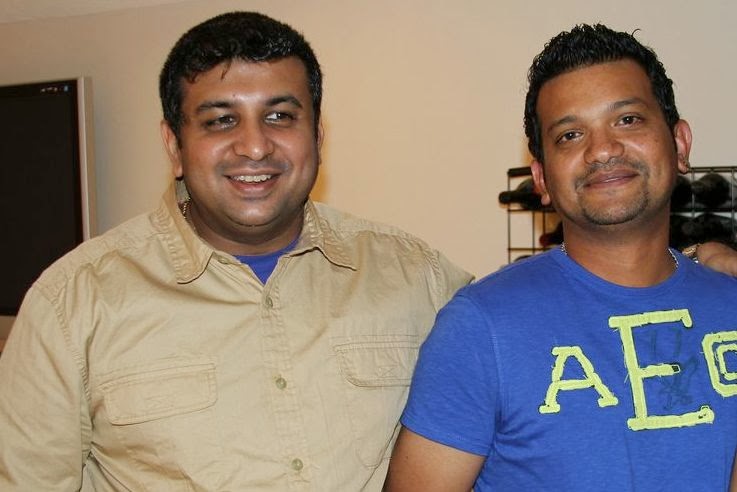




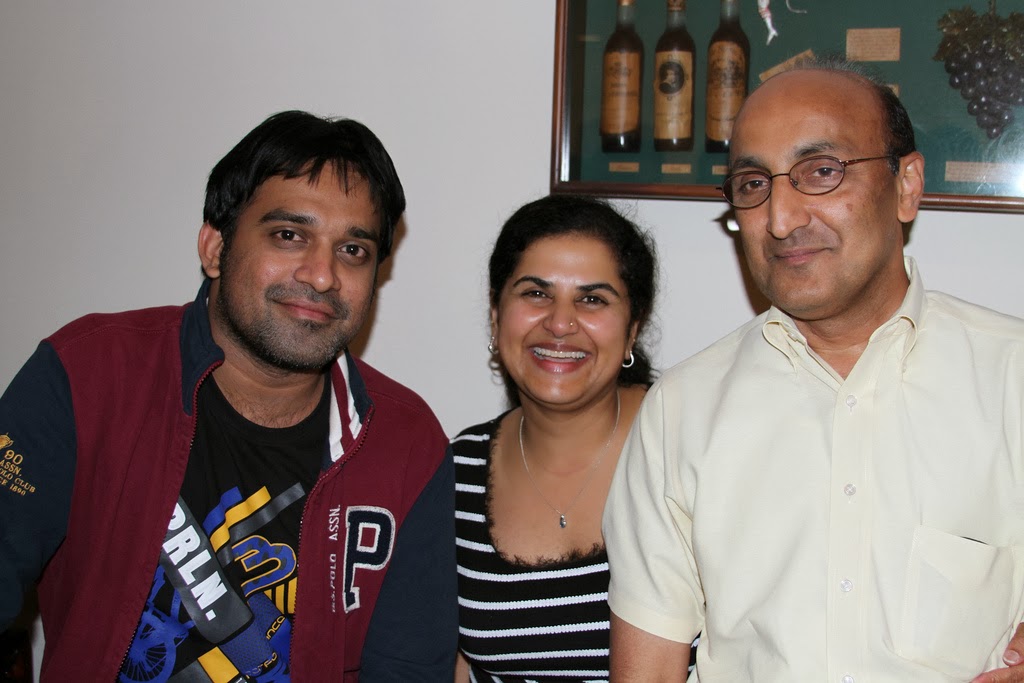



_-_The_Elephant_Hanno_-_Google_Art_Project.jpg)






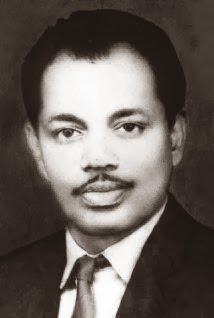

.jpg)










